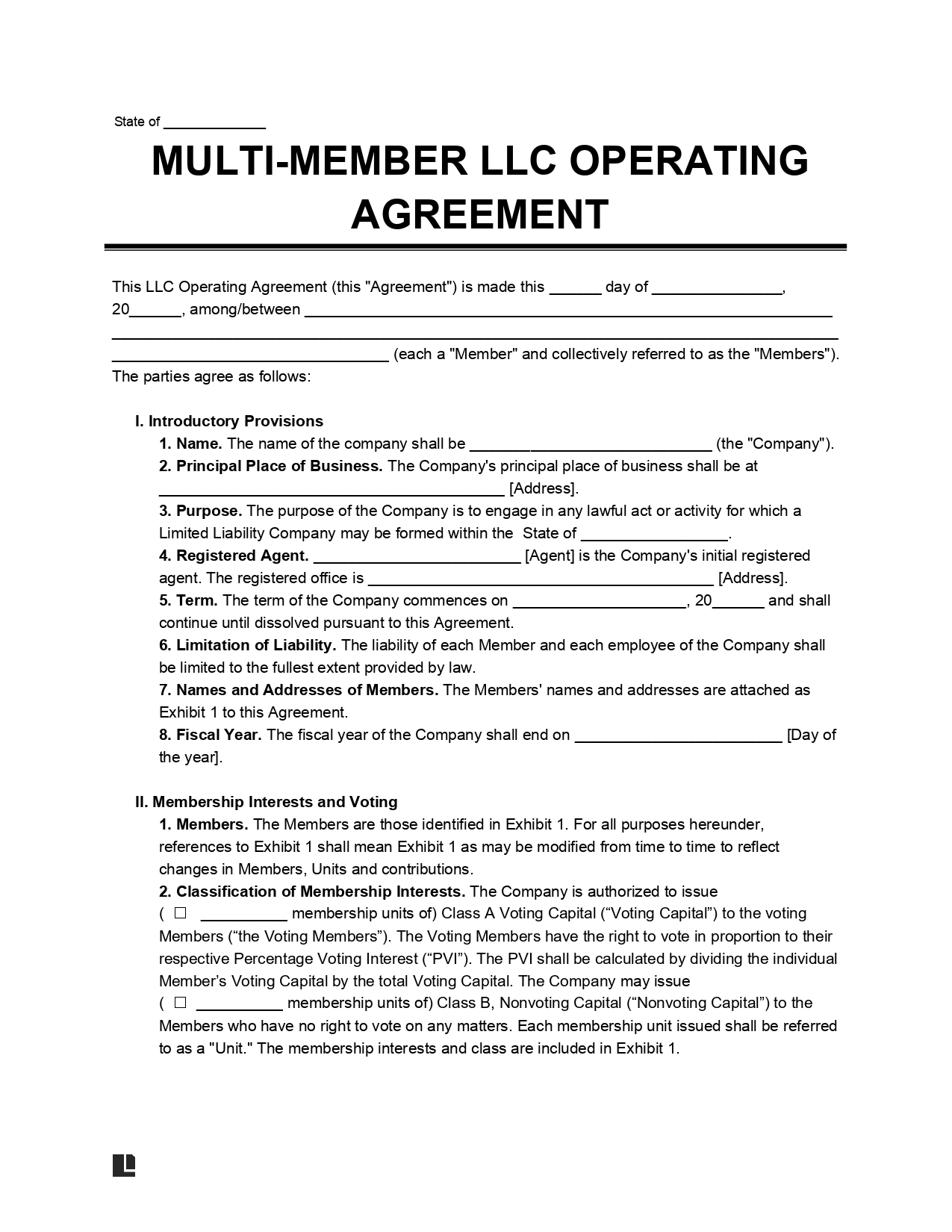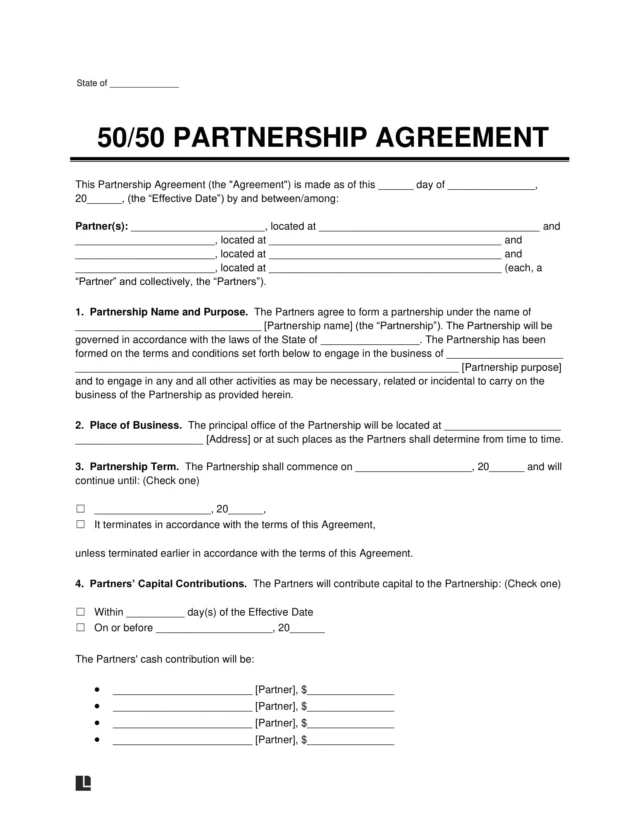What Is a Multi-Member LLC Operating Agreement?
A multi-member LLC operating agreement is a contract between the members of a business. It serves as internal documentation of the LLC’s structure, liability, and operations. The members negotiate and agree on the terms to set expectations for the LLC.
Legal Templates’s free multi-member LLC operating agreement makes it easy to define the rules for a business.
Multi-Member LLC vs. Other Business Structures
Structuring a business as a multi-member LLC provides terms for liability, decision-making, profit distribution, and ownership. Other business models also include their own specific terms and requirements. View the table below to compare the various company structures.
| Business Structure | Formation Documents | Ownership | Liability Protection | Profit Distribution |
|---|---|---|---|---|
| Multi-Member LLC | Articles of Organization Multi-Member LLC Operating Agreement | More than one owner | Limited personal liability protection | Distributed as owners' draws according to the terms of the operating agreement |
| Single-Member LLC | Articles of Organization Single-Member LLC Operating Agreement | Only one owner | Liability protection | Distributed as owner's draws |
| Partnerships | Partnership Agreement | Two or more owners | Unlimited personal liability protections for general partnerships Limited liability protection for limited partnerships | Distributed in equal splits, a fixed percentage, or a performance-based allocation |
| Corporations | Articles of Incorporation Corporate Bylaws | One or more owners | Limited liability protections | Distributed through dividends, shareholder distributions, or bonuses |
Learn more about how to form an LLC to ensure proper filing and get an idea of the information and terms necessary for your business.
How to Write an Operating Agreement for a Multi-Member LLC
Writing an operating agreement for a multi-member LLC requires the members to consider the structure and regulations. Use the following steps to establish your operating agreement with the necessary considerations:
- Record company details: Record as many relevant company details as possible. Include the business name, registered office, tax classification, fiscal year, and management structure.
- Identify each member: Provide the full name, membership units, or ownership interests for each member. If the LLC includes multiple classes, note each individual’s classification.
- Note membership authority terms: Mark whether your LLC allows non-voting members to join. If applicable, you can add terms for these members in your agreement.
- Name the registered agent: Include the full name and address of the LLC’s registered agent. This agent is a trusted individual or entity who receives government and legal communications on the LLC’s behalf.
- Determine voting requirements: Choose whether transfer of interest, new members, and dissolution votes require unanimous or majority approval. Also, set your desired quorum requirements to determine the minimum number of members needed for voting.
- Add other terms: Include any additional terms for your LLC. This can include restrictions for members and the role of non-voting members.
- Provide the business address: Record the LLC’s official corporate business address. This should reflect the company’s principal place of business.
- Set the effective date: Provide the date on which the agreement will become effective.
Sample Multi-Member LLC Operating Agreement
View Legal Templates’s free multi-member LLC operating agreement template to see the necessary terms. Our customizable form is available for download in both PDF and Word formats.






